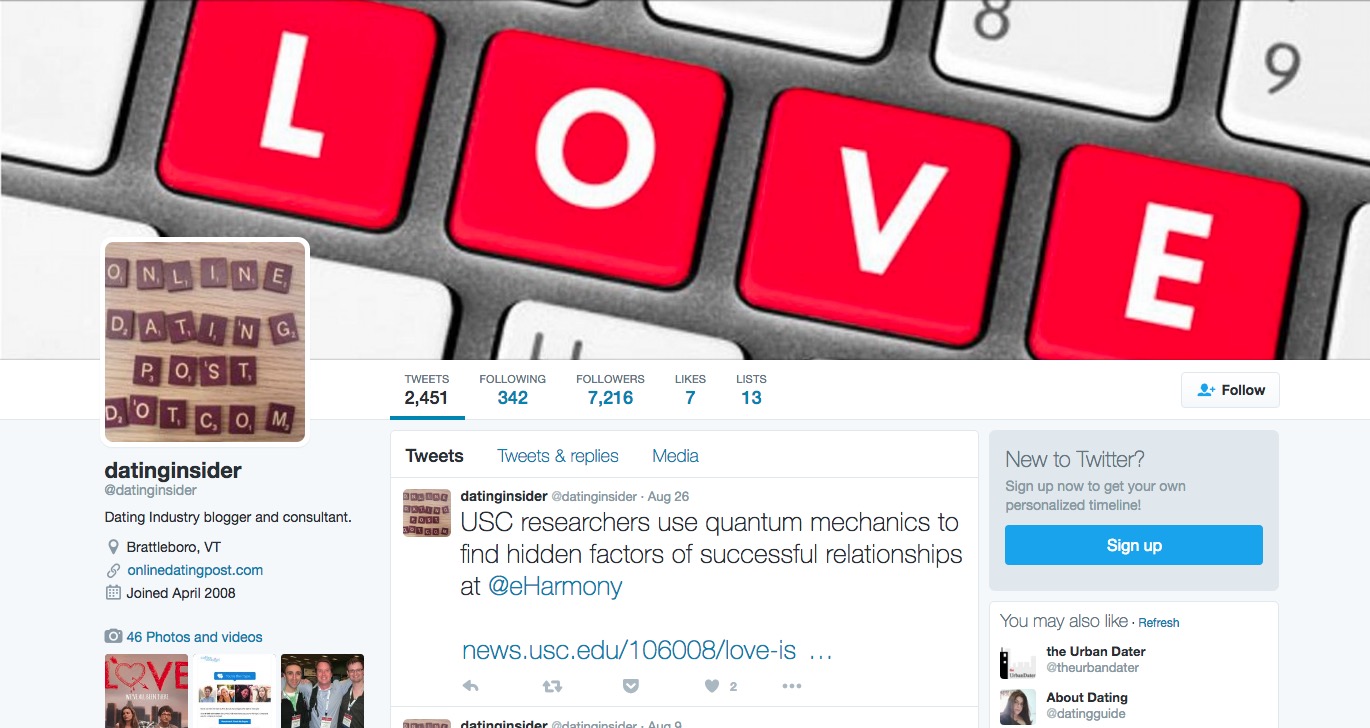Nate Elliot at Jupiter Research has come up with an interesting concept for online dating sites called targeted discounting strategies. This is a concept worth serious deliberation and consideration.
Before going into pricing strategies, it’s important to understand that his clever sound bite has a fatal flaw, discounting. Why spend a lot of time trying to figure out discounting strategies when in fact a cost increase could be and effective revenue opportunity?
Some people argue that charging people $50 a month is too much. I say it’s not enough. Yahoo raised their Premium service cost to around $35. Not nearly high enough to justify the word “Premium.
Eharmony got it right, $50 monthly wager that it will marry me off faster than several months at $25 with the “commoners”, sniff. People use price as a filter. That’s why matchmakers charge $5,000.
At Chemistry and Eharmony, the value is not only the enhanced matching algorithm, you’re paying more so you don’t have to spend hours each week looking at profiles. Paying more to do less.
Funny how on Myspace it’s the exact opposite. All people do is look at other people’s profiles. Last week I looked at a friend’s profile, and 30 minutes later I counted I had looked at 100 additional profiles.
Last night I saw a tv show that said 40,000 women are abducted into prostitution each year. Myspace is a prime hunting ground for this sort of thing. That’s not going to happen on Chemistry or Eharmony.
There are no links between profiles on dating sites. However, FastCupid has done a good job creating blogs and groups, I spend more time there now because I’m interacting with others in my zip code. In fact, we’re going out for drinks soon. Low pressure, just a group of singles. Try doing that on most other dating sites.
Chemistry reminds me of the DNA machines on CSI. Swab in mouth, put in reader, out spits a piece of paper showing if two people are connected.
The email I get is pretty much split 50/50, some people love it, others hate it. People are happy with matches, and disappointed because the service is so broken.
Match had a $500 service at one point, I think it lasted about 3 months.
Up-selling existing customers seems like a smart move, it’s all the rage now. What about the new daters? I hear Match will not actively promote the service until Q3. They have to convert as many people over to Chemistry from Match as possible, where the cost per acquisition is as low as Yahoo marketing across their own network. Once the databases are full, the Match marketing jalopy will kick into effect and we’ll be BinderMindingFinder to our hearts content.
Back to targeted discounting strategies. Nice idea, but too complicated for most dating sites. If targeted advertising on dating sites doesn’t even work, how difficult is it to implement different pricing models?
Before we get into that, what could some of these discounts be?
Repeat browsers- been to a dating site’s home page four times without signing up? Read the cookie in their browser and give them the first month for $9.00. It’s better than nothing or losing them to the True Cleavage campaign.
Active user- Someone sends 50 emails a month, 25 flirts, keeps profile updated, new photos all the time. Treat them like a superstar. They do more for your service than you ever will. They are as close as you’ll ever get to loyal members. At least for three months.
Zip code- if a particular zip code didn’t have many people in it, reduce the rate until it fills up, 25% off.
Race/gender/age- too many old ladies, not enough young gay women, 15% off.
End of subscription- 2 weeks until they leave, 20% off. Some sites offer variations on this already. Most notably PerfectMatch. Balancing the strength of the offer without badgering is key.
Zip code jam-packed? Hot revenue zones need their own special incentives. Time to put in your thinking caps.

